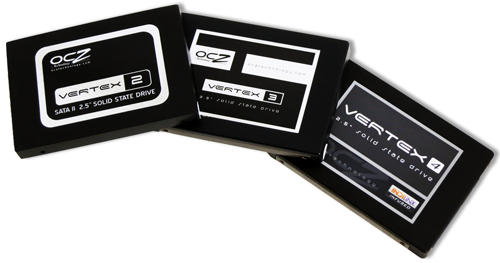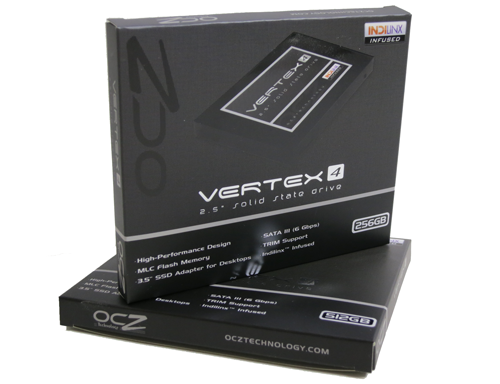OCZ Vertex 4 Review: A Flagship SSD Powered By...Indilinx?
A Gamble Pays Off: Vertex 4 Looks Strong
Last year, in our Octane review, we alluded to OCZ trying to wean itself from SandForce's technology within a single product generation. That day arrived sooner than we anticipated. With the launch of its Vertex 4, OCZ shifts away from the bi-polar behavior of a controller that handles compressible and incompressible data differently. It's now forging its own path taking a different path in the SSD world.

In retrospect, OCZ was one of SandForce's most active evangelists, and the success of its Vertex 2 really put the company on the map. However, a subsequent wave of SSDs based on the same technology, sold by vendors eager to get in on such an accessible architecture, created too much competition doing the same thing.
OCZ responded by purchasing Indilinx, a company able to develop its own controllers. Vertex 4's Everest 2 demonstrates compelling performance—enough so to warrant a graduation from the Octane family to the Vertex class. And it puts OCZ in a position to compete more aggressively on its own terms.
| Header Cell - Column 0 | Vertex 3 (Market Price) | Vertex 4 (MSRP) |
|---|---|---|
| 120/128 GB | $200$1.67 per GB | $180$1.40 per GB |
| 240/256 GB | $340$1.42 per GB | $350$1.38 per GB |
| 480/512 GB | $770$1.60 per GB | $700$1.37 per GB |
Now that OCZ isn't paying for a third-party controller Although OCZ is using a different company's controller (it still has to purchase its NAND, of course), it has a little more flexibility it is being more aggressive with pricing. At least for the launch, OCZ tells us that its Vertex 4 lineup is cheaper than Vertex 3. And there's a good chance that prices on the Vertex 4 will get even more affordable moving forward.

Offering sub-20-second boot times, improved long-term performance, and more affordable prices on fast solid-state storage, the Vertex 4 truly marks a new chapter in OCZ's history. Competitors should take heed: OCZ has declared its controller independence and is on the march with a potent flagship.
Get Tom's Hardware's best news and in-depth reviews, straight to your inbox.
Current page: A Gamble Pays Off: Vertex 4 Looks Strong
Prev Page Real World Performance: File Copy And Boot Times-
compton Octane was not a special and unique snowflake; Indeed, someone else's fingerprints were all over it. Vertex4 is certainly unique, but I fully expect the next round of drive launches using Marvell products to look like the V4, but possibly with some more balance.Reply -
billybobser Seems to good to be true.Reply
We'll see how they are once they've been out in the open for 6 months when problems will/will not flare up. -
maxinexus As Billy said only time will tell. These preliminary tests are great and pricing is better but still SSD are expensive...we need to get to cents not dollars per GB. Anyway good start OCZ...now the only thing you need is your own NANDs...perhaps in few yearsReply -
jgutz2006 This is a great step and makes financial sense for OCZ to come to market with a competitive product and possibly undercut all the others. Its a no brainer im my world. Force Samsung to sell units with less profit marginsReply -
Branden it'll be interesting to see how reliable these drives are and what their failure rate is going to be. OCZ's vertex 2 and 3 drives were horribly unreliable - in my experience 50% failure/DOA rate, my local shop said they see about 10% of them returned due to failure (and that's just within their 2 week return window alone).Reply
sorry OCZ, you've lost my business this time around. i've since replaced all my remaining OCZ SSD's with crucial m4's, they may not quite perform as well as your latest offerings but in my experience reliability > performance. -
JackNaylorPE When I built Son No.2 's box, we installed the Seagate Barracuda XT on Friday and measured boot times at 21.2 seconds to the Password entry screen. The Vertex 3 arrived on Monday and after installing that, we measured boot times at 15.6 seconds. Not commenting on the actual times as differences in hardware as well as testing parameters could push it in any direction, but what I will comment on is the HD choice for this test.Reply
My testing showed it took 36% extra time to boot off the HD instead of the HD. This test has it taking 226 % longer. If we're gonna test the best SSD's, I'd sure like to see a best in class HD added to the comparisons. -
burnley14 Brandenit'll be interesting to see how reliable these drives are and what their failure rate is going to be. OCZ's vertex 2 and 3 drives were horribly unreliable - in my experience 50% failure/DOA rate, my local shop said they see about 10% of them returned due to failure (and that's just within their 2 week return window alone).sorry OCZ, you've lost my business this time around. i've since replaced all my remaining OCZ SSD's with crucial m4's, they may not quite perform as well as your latest offerings but in my experience reliability > performance.It's interesting because so many people have talked about how unreliable they are, but in my personal experience (a small sample size, granted) I've been very pleased with both the Vertex 2's performance and reliability and the Agility 3's. Maybe I'm just lucky.Reply -
drwho1 all I read was: support for 2TB... *drooling*Reply
Price for 2TB SSD?
*not drooling anymore* -
OntarioHero Hmmm. Basically OCZ decided "Indilinx too slow! sod it, stick 1GB buffer in there!"Reply